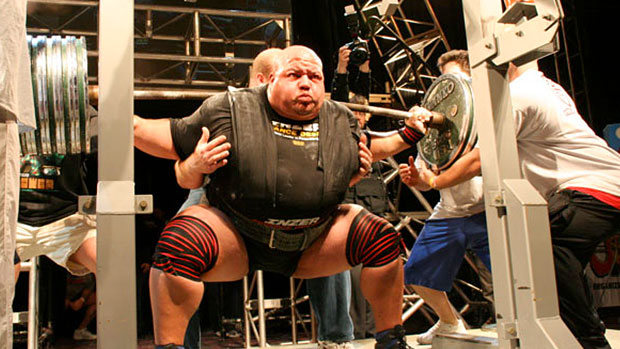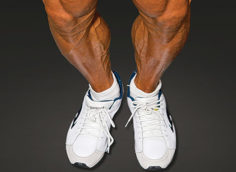Once you're a seasoned lifter, tracking your progress can be challenging. It's not as simple as adding 5 more pounds on the bar every week anymore, and odds are, you cycle through your lifts to help avoid overuse injuries and keep fresh.
So monitoring progress from lift to lift is like comparing apples to oranges, which can make it difficult to know if you're truly getting better.
The solution? Test yourself periodically with a variety of markers comprehensive enough to give you feedback that matters. You likely want to build muscle and strength while being fit and healthy. This means there are more factors to consider than just one-rep maxes on the big three.
Sure, if you're a competitive powerlifter, then your absolute strength on those matter most. For everyone else, there are other qualities to measure and see where they stack up from one year to the next.
What Qualities Should You Test?
Strength
It can be broken down into absolute and relative categories. Absolute strength is going to be the maximum amount of force you can apply, like a max lift. Relative strength is your strength compared to your size, like what you'd demonstrate during pull-ups or any bodyweight exercise.
Muscle
How much muscle are you carrying in relation to your bodyweight? This is as simple as getting a body fat test using calipers, bioelectrical impedance, Bodpod, or hydrostatic weighing. While they all have varying degrees of reliability, you're looking for trends, so just use whichever tool is most readily available to you and stick with that to see how your body composition might be changing.
Health
Health means the absence of disease, and since we know keeping a relatively lean physique reduces disease risks, this gets covered to a large degree in the body fat test. Yearly blood work is also a good idea, but that's outside our scope here.
Fitness
This is a term more open to interpretation. You could think of it as your ability to perform specific physical tasks. Michael Phelps was fit to swim but not to win the Tour de France.
For our purposes, let's think of it more in terms of conditioning. The specific activities you like to do could influence the way you test your conditioning and determine what events you're fit for. But I'm a big fan of the 10/10 test (we'll get into the details in a bit). It isn't a sprint and it's not a pure endurance event, but falls somewhere in the middle, making it a good bet for most people.
The Five Tests
Here are the tests you should give yourself each year (the week of your birthday is a good time) to know whether your training is yielding real results or if you just spent the whole year spinning your wheels.
You can do them all on the same day if you'd like, or just do them all within the same week. Keep track of your results so you have something to compare to next year.
1. Bench Press: Bodyweight x Max Reps

One-rep maxes are great, but if you gain a bunch of weight, even if it's not all lean mass, you're also likely to increase your bench. If you gain 20 pounds and bench 10 more pounds than you did when you were lighter, does that really make you better?
A better way to look at this is by taking your current bodyweight and lifting it for max reps on the bench. This will help you do a better job of assessing your relative strength, and you can make sure any mass you gain (or lose) positively impacts your performance.
2. Chin-Up: Bodyweight x Max Reps

Strength relative to your bodyweight wins out here. If you get too fat, your chin-up numbers are going to drop. If you add lean mass, it shouldn't negatively impact your chins.
In a perfect world, your number of bodyweight chin-ups would exceed the number of bodyweight bench presses you could do. This would help with shoulder health and indicate an adequate strength balance. If your chin-up numbers are less than your bench numbers, it's a sign you need to focus more on pulling than pressing and/or review your diet and lose some fat.
3. Front Squat: 3RM

No battery of tests would be complete without a max strength test. You could make an argument that this should be a deadlift or back squat, but here's why the front squat is a better option:
Front squats are self-limiting; you either nail it or you dump the bar. When it comes to testing your back squat and deadlift, you can still complete less than perfect reps, which can skew your comparison from one year's test to the next. You're looking for real improvement, not how much you can cheat to improve your numbers.
If you're on the platform in competition, it's all about winning, so hell yeah, do what you need to complete the lift. When it comes to testing yourself to see if your training has been productive, there's no room for risk.
Besides being self-limiting, you need a lot to go right to front squat heavy: ankle mobility plus a strong lower body, trunk, and upper body to keep tension and maintain a clean front rack. It checks a lot of boxes, which makes this the best lift for a total body 3-rep max strength test.
4. Body Fat Percentage

This one is straightforward – are you leaner or fatter? You'll have your own range that you're comfortable staying in, and it's going to fluctuate somewhat at different points of the year, depending on what your specific goals are at different training phases.
That doesn't mean you can lose sight of the big picture, though. If body fat is up and your lifts are down, you need to reprioritize your training, nutrition, or lifestyle.
5. Treadmill: 10/10 Test

You should never neglect conditioning, and this test will let you know whether it should become more of a priority. Simply set the treadmill at 10 miles per hour and a 10% incline. Use the side rails to hop on when it gets up to speed and incline then stay on there as long as you can.
If you can't last a minute, your conditioning needs to take on a higher priority. You should strive to fall somewhere between one and two minutes, and if you last longer than 2 minutes (there's a joke in there somewhere), then your conditioning is in a good place.
This isn't so much about strength standards, but it does give you some objective feedback about how your training has been working. It's about competing against yourself from one year to the next. At some point in life, not going backwards is a win in and of itself.
The Results
Write down how you do. The results of these tests will give you the info you need on how to move forward.
If everything is better from one year to the next, then keep on keeping on. If you can't complete any of these tests due to an injury, that alone can tell you something about your training. Typically, there's a combination of things that this testing battery will bring to light, and it'll allow you to refocus your energy and efforts toward a more productive training year going forward.




